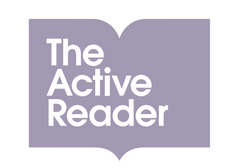Orton-Gillingham Can Be Such a Mystery
Orton-Gillingham Can Be Such a Mystery

If I had a dollar for every time I've been asked to explain what Orton-Gillingham is, I would be rich! The internet works in mysterious ways when it comes to what we in the industry call OG. Parents and educators are constantly telling me how they've been scouring the web for information, yet are more often than not, coming up dry.
My reasoning behind this is two fold. First, OG is an approach rather than a program. Practitioners bring their own style and flare to the remedial space, and the learning trajectory is based around the individual needs of the child. Second, the certification for OG is time consuming and quite expensive which inevitably leads to the creation of valuable knowledge and content. For those in the business of training, the less on the web, the better.
So, I'm here to break it down for you with as much clarity as possible. I like to describe OG as a science of reading and language. It's a structured literacy approach that's grounded in proven and effective remedial strategies.
OG's fundamental strategies:
-
Multi-sensory approaches
-
Basic to complex skill development
-
Direct teaching practices
-
Student-centred learning environment
-
Repetition and review
Multi-sensory:
An OG learner will be equipped with multi-sensory tools which will allow them to process information through their visual, auditory, kinaesthetic and tactile learning pathways. If there is a weakness in one or more pathways, the student will be using all their senses to process and compensate. Over the course of a lesson, students are using these methods to decode, encode, blend, and learn. OG is incredibly fun and interactive, and children love using these unique strategies while learning the foundations of reading.
Basic to complex:
OG students move from basic to complex learning objectives and are only introduced to more difficult skills when they feel confident in the understanding and application of the more foundational objectives. We start with phonology and understanding the individual letter/sound combinations and move towards more complex structures found in word building and syllabication rules.
Direct teaching practices:
From an outsider's perspective, the English language seems quite random and full of inconsistencies and exceptions. In reality, there are tons of patterns and rules that OG has identified, broken down and made digestible for young learners. An OG instructor will use simple language and steps to directly teach the patterns of the language and provide focused practice that helps to solidify the taught objectives.
Student-centred:
A thorough literacy assessment is standard practice among OG practitioners. The assessment looks at areas of phonemic awareness, fluency, comprehension, spelling, and writing strategies. The process creates a space for the teacher and child to get to know one another, helps the instructor get an understanding of the student's strengths and weaknesses, and provides a look into the positive and negative learning habits of the child. From there, the instructor will create a student profile and identify an individualized plan-of-action that works to systematically fill in the gaps in knowledge.
Repetition and review:
This last OG feature is key for many children who are learning to read as the more they review, repeat, and recycle a learned concept, the more likely they'll be to remember and apply the knowledge later. Repetition and review are built into every lesson and contribute to the systematic and predictable nature of Orton-Gillingham.
Woah, that turned out to be a little more than I expected. This is just a basic overview of Orton-Gillingham, and I hope it was helpful. Stay tuned as we breakdown these fundamental areas even further and jump into the practical application of the strategies.
